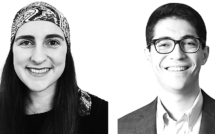
April 2022: Digital Humanities as Method, Tool, and Practice in the Higher Education Classroom

In this section of Campus, EuropeNow features a selection of scholarly articles and books on topics pertinent to the teaching of Europe or teaching in Europe that were published within the last 5 years. This dynamic bibliography, with monthly installments, seeks to highlight both pedagogy research as well as critical analyses of debates taking place in higher education in and about Europe.
If you are interested in reviewing any of the books featured in any of our Campus Round-Ups, please contact our Research Editor, Hélène Ducros, at helene@alumni.unc.edu
1. Digital Autoethnography and Connected Intelligence: Two Qualitative Practice-Based Teaching Methods for the Digital Humanities
By Stefano Calzati
Abstract: In higher education, we witness a unique conjuncture: on the one hand, students who attend academic courses are the first generation to have fully grown in a digitalized world; on the other hand, teachers, while having grown and studied in a still largely analogue world, have witnessed the evolution of today’s techno-society since its infancy. By connecting the field of the Digital Humanities with education, this article discusses the conception, design and results of two practice-based teaching experiences, which were aimed at exploring the tensions embedded in our daily use of digital technologies, as well as in today’s techno-society as a whole. The first one is a “digital autoethnography” developed at the City University of Hong Kong; the second one refers to the course “Anthropology of Communication” – co-delivered at Politecnico of Milan – which adopted a “connected intelligence” approach to urge students to reflect on tomorrow’s techno-society in a collaborative way. While the first experience was chiefly a self-reflexive study on the impact of social media on the individual, the second one mapped the main criticalities of techno-society as a whole, according to seven macro-themes, and asked students to elaborate possible solutions. Both courses considered students as active learners/users, insofar as they are at the forefront of today’s digital revolution, but also the subjects most in need of critical tools to face it.
Find the article in Umanistica Digitale here.
2. The Digital Humanities Classroom as a “Node.” From Toolbox to Mindset?
By Florentina Armaselu
Abstract: The paper describes a framework for digital pedagogy and evaluation that combines different approaches – theoretical, application-oriented and project-based – underpinned by a view of the digital humanities classroom metaphorically defined as a “node.” The metaphor encompasses the hybrid character of digital humanities teaching, as a crossing or convergence of paths, which involves the use of various categories of study materials, themes, examples, methodologies and skills, as well as exchange,
circulation of ideas and connection with other disciplines. It is assumed that the application of this type of hybrid approach in the course design, together with the coverage of a variety of tools to be studied in class, might foster a reflective mindset, enabling the students to contextualise the digital technologies within different humanities areas, beyond the acquisition of technical skills and knowledge of computational methods and tools usually referred to as the toolbox-based education paradigm.
Find the article on Zenodo here.
3. Learning Digital Humanities in a Community of Practice: the DEAR model of Postgraduate Research Training
By Francesca Benatti, Paul Gooding, and Matthew Sillence
Abstract: To date, there has been relatively little discussion of how the UK doctoral funding landscape shapes digital humanities pedagogy for postgraduate research students. This article sets out to address this relative lack, by introducing the inter- and multi-disciplinary context in which many students in the UK work. We examine the phenomenon of students who are not necessarily interested in becoming DH practitioners, but have identified DH as a knowledge gap in their own disciplinary practice. Such a realisation changes the nature of the learner within DH communities of practice, requiring a different form of learning. This study therefore explores learning within a community of practice, the inter- and multi-disciplinary space in which digital humanities practitioners operate. First, drawing on the diverse disciplinary landscape, it highlights an individual’s learning journey through self-determined learning (heutagogy). Second, it outlines an idea of digital humanities pedagogy for postgraduate research based on current frameworks of digital literacies and broader researcher development in the UK, framing research activity as learning. Third, it presents the DEAR model for learning and teaching design, which is based on four principles: Diversity; Employability; Application; and Reflection. Finally, it provides an evaluation of the DEAR model in the context of one UK Doctoral Training Partnership (DTP). It contributes to understanding of pedagogical practices for doctoral-level DH training and provides a set of recommendations for instructors to adopt and adapt these pedagogical principles in their own programmes.
Find the article in Digital Humanities Quarterly here.
4. Discovering Digital Humanities Methods through Pedagogy
By Kristen Mapes
Abstract: Digital Humanities (DH) carries a range of meanings depending on the context, but it has coalesced into an institutionally recognized field in many universities, and so courses are offered to train students in DH. How do instructors choose to teach this shifting topic? What methods do students learn, and how do those methods fit into the research practices of faculty and other scholars? This chapter will provide an environmental scan of pedagogical writing and practice in DH, including published work, blog posts, and syllabi from instructors. The chapter will highlight the range of approaches undertaken in teaching DH methods, as instructor background, institutional context, and global situations support a range of approaches. I will also bring into the chapter my own approach and experience teaching undergraduates introductory DH classes. Despite the variety of approaches to teaching DH and the range of methods included in the practice of DH, there are a number of common themes and values. The chapter will focus on how teaching DH methods imparts skills and critical thinking in issues of project management, accessibility, labor ethics, preservation, and public humanities.
5. Integrating the Digital Humanities into the Second Language Classroom: A Practical Guide
By Melinda A. Cro
Abstract: Second language classrooms provide unique opportunities for intellectual growth, cognitive skill development, and cultural exchange. In Integrating the Digital Humanities into the Second Language Classroom, Melinda A. Cro makes the case for bringing the digital humanities (DH) into that sphere, strengthening students’ language skills while furthering their critical thinking and research abilities. Written as a practical guide for language instructors new to DH, Cro addresses practitioners’ most common questions: What are the benefits of DH for language learning in particular? How can DH be used at different levels of instruction? What types of DH tools are out there, and what kinds of knowledge must students and teachers bring to the table? Integrating the Digital Humanities into the Second Language Classroom is filled with real-world examples and concrete recommendations, making it an ideal introduction for language teachers intrigued by the potential of DH.
Find the book at the Georgetown University Press here.
Published on April 18, 2022.




